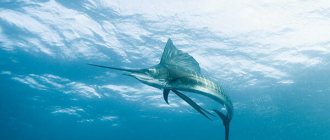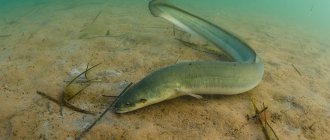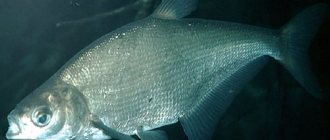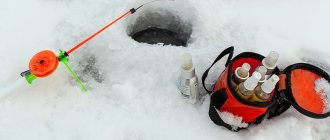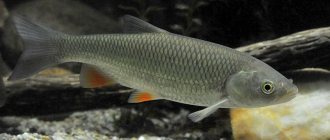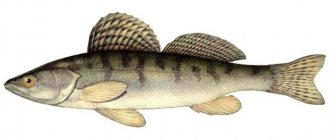Fish is of great importance in nature and in human life. It is food for birds, a link in the nutritional chains of all living organisms. The main value of fish as food products lies in proteins, vitamins and minerals. Fish oil is rich in vitamin D, which is very necessary for children and adults.
One of the representatives of the perch fish is the bersh fish, whose second name is the Volga pike perch. This is a large schooling predator that belongs to the genus of pike perch: its photo can be seen below.
Bersh (fish): description
This is a representative of purely Russian fish, which combines all the features of pike perch and perch. Its body is elongated, spindle-shaped, covered on top with small, firmly seated scales.
The front fins consist of bony spines, which are interconnected by membranes. A characteristic feature is the formation of a small hump and large eyes. The teeth are almost all the same, without the presence of sharp fangs. There are dark transverse stripes on the body, there are eight of them. The cheeks are covered with small scales; they are larger on the body.
The usual weight typical for bersh is 0.8-1.2 kg with a length of 20-30 cm. Longer specimens are found in the waters of the Dnieper. According to fishermen, on the Volga there are fish of this family weighing up to two kilograms and up to 53 cm in length.
Useful properties of bersh
Fish, unlike animal meat, contains much more useful components. In addition to being nutritious, fish meat is also low in calories. In this regard, we can safely classify bersh meat as a dietary product. At the same time, its meat is quickly absorbed by the body.
The presence of vitamins and microelements in the meat of a predator, along with other useful substances, allows the human body to be replenished with almost all components that have a beneficial effect on the functions of the human body. Moreover, all components act comprehensively, improving the functioning of the kidneys and liver, refreshing the condition of the skin, strengthening bones and stimulating tissue regeneration.
Regular consumption of fish allows you to cleanse the body of toxins and waste, while increasing the overall tone of the body, while improving metabolism. In addition, some components have a positive effect on the functions of the central nervous system.
What is the difference between bersh and pike perch?
Pike perch is more valued for food, and bersh is a fish that is ignored by fishing enthusiasts and is rarely taken into account. In terms of taste, it is inferior to pike perch and perch, but fishermen consider it a valuable and successful trophy. In order to understand all the differences, you need to know some of the characteristics of both types.
What is the difference between bersh fish and pike perch? There are so many descriptions on this topic, but this issue has been touched upon everywhere so far, both on the pages of printed publications and on the Internet. It’s time to learn the difference; some fishermen still proudly show off their catch, calling pike perch bersh. Many people think that bersh and pike perch are the same fish.
This is not true at all, they are completely different, although they have a lot in common. The easiest way to distinguish them from each other is to check the presence of fangs. The pike perch is commonly called fanged because it has clearly distinguishable fangs, while the bersh does not.
There are some other distinctive features: the bersh has a shorter and wider snout than the pike perch, larger scales, non-bare cheeks and slightly larger eyes. These fish are almost identical in color. The size of pike perch is larger.
Kinds
This species of aquatic animal belongs to a fairly large family of perch. Volga pike perch is the second name for bersh, and some even confuse such fish with pike perch.
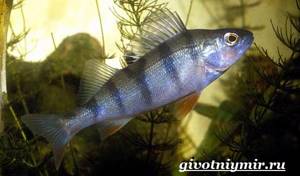
These two species are indeed very similar, being representatives of the same genus of fish. The main distinguishing feature of a bersh is the absence of sharp fangs in the mouth. In addition, such aquatic creatures have a wider and shorter snout, larger eyes and practically bare cheeks covered with small scales.
Bersch is not the largest fish. But although its length, on average about 25 cm, often reaches half a meter, pike perch are found much larger. The color of berche fish and pike perch is almost the same, but the color of the former has much less yellowness. And these aquatic creatures do not have the hump characteristic of pike perch.
Bersh (fish): where is it found?
The distribution of this fish is very limited; it is found almost nowhere in large quantities. The main habitat is the Volga River basin, but even there it is not found everywhere. It does not like to go high upstream, which is why it is not found above Rybinsk.
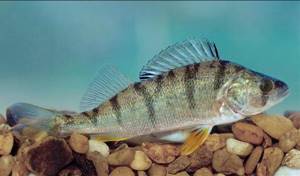
However, it lives throughout the Sheksna River and in Beloozero. Bersh (fish), similar to pike perch, is found in the Baku Bay area of the Caspian Sea. They say that it can be seen in the Ural River, but this is not accurate data.
Volga pike perch bite depending on the time of year
The best time for catching bersh is autumn and spring, late May - early June, October. During this period, zhor is observed, pike perch is found in relatively shallow places. The places of zander ambushes and favorite places are the same as those of many predatory fish - sharp changes in depth, pronounced edges, dumps, holes, flooded snags. Like the common pike perch, the bersh hunts in schools, so after the first bite there is no need to rush to change the place of fishing. If you continue casting the spinning rod in the same place, expect the bite to continue.
Catching Volga pike perch occurs using live bait - fish 5-7 cm long, as well as an arsenal of spinning pike perch baits - wobblers, twisters, foam fish and vibrotails.
Lifestyle
Volga pike perch prefers fresh water, where it leads a bottom-dwelling lifestyle. Doesn't go out into the clear sea. In summer, it lives in places where it finds a lot of food: fry - closer to the shore, adults - at the depth of the river bed. In winter, it lives in deep bottom layers of water.
In the Volga reservoirs, fish are found at shallow depths, where the water flows slowly and the bottom is sandy or rocky. A silted riverbed with a depth of up to 40 meters is also suitable for it. It is most active in the morning and evening.
Character and lifestyle
Bershi prefer to spend their lives in fresh water bodies. They do not really like salt water, and do not swim into the seas. Living in rivers and lakes, they tend to stay at great depths (at least 14 m), closer to the sandy or silty bottom, trying to leave polluted areas, highly appreciating the purity of the water in which they live. In addition, these fish are extremely sensitive to low oxygen levels in the water.
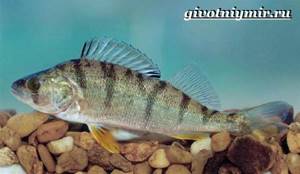
In the summer months, the bersh tries to find areas where there is enough food for them. Adults stick to deep river beds; in those places it is not difficult for them to find prey to their liking.
And the fry tend to occupy the coastal territory, where they find food appropriate for their age. If these creatures are not busy searching for food, they hide at the bottom, among stones and snags, where they rest in peace and quiet. In winter, the bersh goes to greater depths.
Such fish always stay in schools. They are most active in the early morning hours and late afternoon, which is usually taken into account when fishing for bersh by lovers of this type of activity.
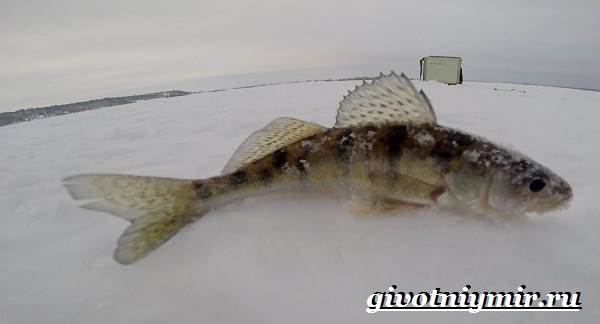
For anglers, these fish have always been a desirable catch, being the object of amateur fishing, as well as sport fishing for bersha . The taste of the meat of this aquatic creature is somewhat peculiar, but it is considered a delicacy, and dishes from it are included in the menu of many very popular restaurants.
The best period for fishing is the warm days of the spring, summer and autumn months. And the best time of day is the hours after sunrise and before sunset, that is, periods of active feeding of this fish.
Bershi respond to many types of bait. Silicone twisters are also used. For fishing for bersha, any kind of gear is used: spinning rods and fishing rods, donks and girders. When catching this fish in winter, it is best to use a fishing rod equipped with an inertial reel.
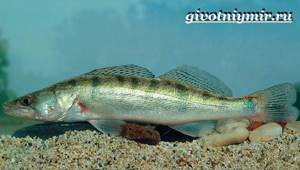
Diet
The diet of all fish depends on the characteristics of their habitat and age; this includes such an inhabitant of the waters as the bersh. This fish, as scientists have proven, feeds on more than ten species of living creatures; bleak is considered the main food. The size of the required food directly depends on the predator itself. The one, which is up to four centimeters long, eats dragonfly larvae and horomid pupae. Older fish begin to eat nektobenthic crustaceans, crayfish and fish fry.
Bersch 30 cm long eats individuals up to eight centimeters long, and large ones - up to 10 or more centimeters.
Delicious recipes from bersh
From such a predator as bersh, it is possible to prepare various delicious dishes. At the same time, the dishes are not only tasty, but also healthy.
Stewed berche with onions covered with cheese crust
To prepare this very tasty dish you need to prepare:
- Half a kilo of fish.
- Three onions.
- 150 grams of hard cheese.
- 70 grams of mayonnaise.
- Greenery.
- Salt.
- Spices.
Cooking technique:
- First of all, the fish is cleaned, gutted and washed thoroughly. If you remove all the bones, you will get a more desirable dish. After this, the fish is cut into portions, salted and peppered.
- The onion is cut into half rings and mixed with mayonnaise.
- The oven turns on and heats up to the desired temperature. The fish is coated with mayonnaise and onions and placed in a baking dish. In this state, the fish should cook for about 35 minutes.
- After this time, the fish is removed from the oven and the dish is sprinkled with grated hard cheese on top. After this, the fish goes into the oven for another 5 minutes. Before serving, the dish is decorated with chopped herbs.
Bersh with greens
The following components will be required:
- 4 medium sized fish carcasses.
- Dill.
- 6 cloves of garlic.
- Parsley.
- Basil.
- Green onions.
- 3 tablespoons of mayonnaise.
- Vegetable oil.
- Salt.
- Pepper.
How to cook:
- The fish is cleaned, gutted and washed thoroughly. At the same time, you must remember to cut off the heads, fins and tail.
- All greens are chopped, placed in a separate container, with the addition of garlic juice and vegetable oil. After this, all this is salted to taste.
- Fish carcasses are stuffed with prepared herbs. At the same time, this mixture should be thoroughly coated with the inside of the belly of the fish. The top of the fish is coated with mayonnaise.
- The fish is placed on a baking dish and sent to the oven for about 40 minutes until the fish is covered with a golden crust.
Stewed beurche with onions and carrots
To prepare this simple dish, you need to have:
- About 2 kg of fish.
- Three onions.
- One carrot.
- Flour.
- Salt.
- Spices.
- Vegetable oil.
Cooking method:
- The fish is cleaned and washed thoroughly, after which it is cut into portions. After this, the fish is salted and the necessary spices are added.
- The fish is dredged in flour and then fried in a frying pan until golden brown.
- The onion is cut into half rings, and the carrots are chopped on a coarse grater.
- After the fish is cooked, onions and carrots are fried in the same frying pan.
- As soon as the onion is cooked, put the fish on top, reduce the heat and simmer the fish under the lid for about 7 minutes.
- Before serving, the fish is decorated with herbs.
Bersh is considered a fairly tasty and healthy fish. In appearance, it resembles something between a pike perch and a perch. Catching it is not so easy, since large individuals prefer to be at depth and away from the shore. Therefore, if you catch bersha, it is better from a boat, armed with deep-sea gear.
Source: FishingDay.org
Reproduction
Bersh begins to reproduce only in the fourth year of life, at which time puberty begins, and the body length reaches 20 centimeters or more. Spawning takes place in April–May, when the water temperature rises to more than ten degrees. To do this, the fish choose shallow places with sandbanks, the depth of which is up to two meters. Here the bersh builds its nest, covering it with rhizomes of aquatic plants. First the female spawns, then the male guards the nest from predators.
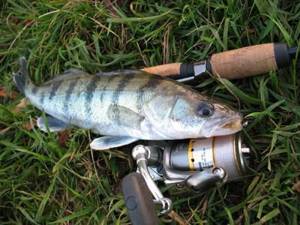
The eggs are very small, yellow in color, and their diameter does not exceed 0.84 millimeters. One female lays about 250 thousand of these eggs, fertility depends on the habitat. For example, bersh (fish) from the Kuibyshev Reservoir spawns up to 472 thousand pieces.
After five days, larvae up to five millimeters in length hatch. After hatching, they feed on the remains of the gall sac for a week, after which they switch to external nutrition.
Spawning
Bersh becomes sexually mature at the age of more than 4 years. Depending on the reservoir and the course of spring, spawning occurs between April and May, with water warming above 10 degrees. The spawning pattern is similar to pike perch. Eggs are deposited in “nests” on sandy soil in places with good flow. As a rule, these are shallow places - spits, rifts.
The nests are guarded by the male until the larvae hatch from the eggs. Juvenile bersha stay in shallow waters, feeding on zooplankton. As they grow up, young bershi move to deeper areas and switch to feeding on fry.
Up
Fishing for bersha
The Volga pike perch has always been a desirable prey for sports fishermen and amateurs. This fish is valuable from a gastronomic point of view; it is distinguished by its delicious gourmet meat and finds a place on the menu of the best restaurants. Bersch is not a large fish, but always lives in whole schools. This promotes fishing, making it more exciting and active. They never fish for it purposefully, only in rare cases.
It is very well caught in the spring, in the summer after spawning and in the fall, during active feeding, for both pike perch and bersh. Fish that are fished in a similar way will bite on any bait that is the same for these types of bait. This is a whitebait, live bait, a frog, several worms, a piece of lard, and silicone twisters are also suitable. Any gear can be used: float rods, spinning rods, girders, donks. Sometimes they are caught with a track; jigs and wobblers are effective for catching fish.

It is very difficult to catch Volga pike perch in winter, since it does not need food at this time. You have to look for it in deep holes and under snags. It is best to fish with a winter fishing rod with an inertial reel, using worms, bloodworms and various kinds of larvae as bait. Some fishermen use jigs, the best of which are drop-shaped copper and white or luminous ones.
The fishing line should be 0.2 mm thick, the load should be chosen so that the current can easily carry the bait for thirty meters.
Lures for fishing
Most of all, fish love silicone baits, which are most similar to live ones. But it’s better to take all the types of colored baits that are available with you when fishing. Twisters, vibrating tails and even foam fish are used. It is better to hide the hook, for example, with wool.
The size of the bait should be no more than 8 cm.
The fish bite on brown, green and yellow colors. At night, he is attracted to very bright or luminous objects.
Bersh is often confused with pike perch, therefore, having understood the intricacies of its appearance and fishing features, you can show off your knowledge and catch to your friends.
